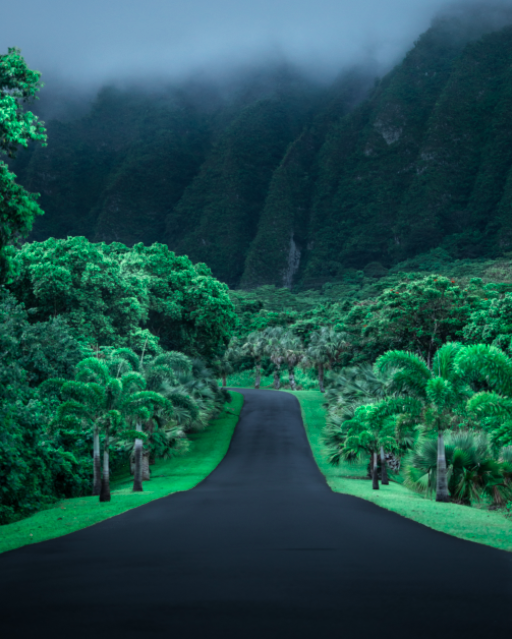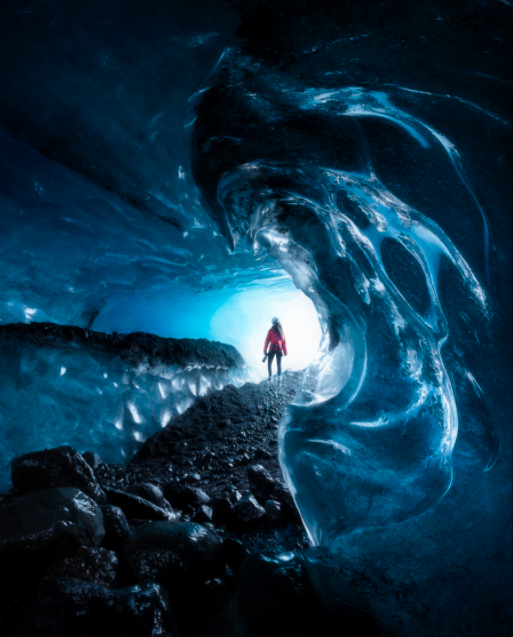The environmental message behind Cath Simard's original NFT photography
Defining the purpose of art is as easy and wise as dousing yourself in oil and attempting to throw a 7-10 split across a bowling alley without shoes on. This is theoretically possible but a wildly unstable task. For many, the merit of art lies in its very purposelessness, the fact that a work is not required for its value.
Still, there are many revealing discussions to be held about Why of art, and this is a topic that over the years the artists themselves have attempted to address. A more compelling example of this was given to us by the Swiss visual artist Alberto Giacometti, who once said that the purpose of art is “not to reproduce reality, but to create reality of the same intensity.”
It is especially by this artistic standard that Cath Simard, a Canadian-born jungle photographer and digital artist, succeeds.
Anyone who has ever happened upon a breathtaking landscape in nature and tried to capture its scale and beauty knows how difficult the task really is. But Simard’s remarkable skills as a photographer not only reproduce the raw power of the natural geographic areas he shoots, but his unique eye as a digital editor pushes those landscapes into the realm of the imaginary. . The result is surreal composite photographs of an extreme intensity that boggle the viewer’s conception of nature.
Simard’s first NFT experiment
Simard’s NFT photography can be found on SuperRare, where 21 of the currently featured photos have sold out. His involvement and success in the field of NFTs, however, was initially born out of feelings of dismay at how images were treated online and how artists often went without proper credit or compensation for their work.

In October of 2017, Simard shared a photo of a lonely Hawaiian road on his Instagram account. It quickly went viral, shared thousands of times on various social media platforms, largely without credit to Simard and entirely without any monetary compensation.
Rather than continue the lengthy and tedious process of tracking down companies that used the image without consent, Simard decided to authenticate the original image as NFT on Ethereum and then make it available for free download. #freehawaiiphoto is the first image in the world whose rights have been sold on the blockchain for 100 ETH ($303,481) after the sale. It’s a clarion call for fair compensation to artists in the modern age and a poignant comment on what it means to own and control an image online.
“NFTs have been amazing for building my name and my brand as an artist, but at the same time, it was hard to balance it with exploration,” Simard explained in conversation with NFT Now. from online communities.
Simard is currently On shooting in PatagoniaOne of the most dramatic and iconic landscapes in the world.
“At the end of the day, I’m an artist. I’m not there to look at my phone 12 hours a day. So I’m going to Patagonia. I’m living there until the end of April. For me, that realm of creation Must come back.”
Using NFTs to Raise Environmental Awareness
The nature of Simard’s work means that she produces only a small number of photographs each year, as they involve extensive travel to remote locations and a lengthy editing process.
The subject matter of these photographs often includes the wide, mountainous terrain of New Zealand, Scotland, Nepal, Canada and other countries. Shooting in cold mountain ranges enables her to capture ephemeral landscapes within these already unique topographies. These scenes often represent a planet in the midst of rapid climate change, something she seeks to demonstrate with her art.

“I like to shoot ice caves,” she says of her work. “They are impermanent, they are basically proof that the earth is changing. Their lifespan is one to three years, depending on where you are. They change rapidly, there are few people who have It’s time to be photographed. It makes those distinctive creations rare.”
She often likes to incorporate herself into her images, as doing so gives the viewer a sense of scale and invites them more deeply into the scene.
“It’s one of my signature styles. I shoot the sky and the moon separately. Most of my work is composite. A technique I’ve been developing in recent years […] Which really allows me to be as creative as possible. I like to take individual pictures of each element and make my life hell by coming home [while editing it] And put it together like a puzzle. I think it makes my work a little unrecognizable. ,
One of Simard’s most recent projects is an AI-integrated effort called The Metascapes, a collaboration with Yuri Belegerschi, owner of one of Iceland’s largest photo-tour companies, and Ryan Newborn, a glacier guide and professional landscape photographer. Artistic collaboration.
All three artists uploaded their entire lives’ work – more than 2,500 images and videos told in all – to a generative adversarial network (GAN), a type of machine-learning model that could generate new images from the data on which It has been trained.
In this case, the model was used to create a “hyper-realistic landscape”, blending the stylistic elements of all three artists. The fascinating part of how a GAN works is that it is made up of two “competing” neural networks.
In this case, the first generates landscapes, while the second, a differential model, serves to identify which landscapes are real images and which are generated in the system. The discriminator then feeds back the input to see how the generator can improve its image output. In the end, the discriminator is only able to infer the authenticity of the image with 50 percent confidence, meaning the image is so realistic that it’s only a toss-up to guess where it came from.
Simard and his colleagues have generated the most compelling outputs from machine learning models and released them as an NFT archive available on OpenSC.
,[It was my] First time doing something outside of pure photography.” Simard says about the project. “I’ve been exploring and experimenting with different mediums. I got interested in AI. I saw my friends Yuri and Ryan […] And we got the idea to mix all of our work together and let AI basically be that new “photographer,” a perfect blend of our brains and styles.
The collaboration will include an event in Iceland called the NFT Iceland Camp, which will take place over a few days at the end of 2022 and will include collectors, artists and creatives who want to “help drive innovation and fun in the NFT community.” In particular, owners of the rare Metascapes NFT will have pre-sale tickets to the camp.
“We wanted to use our skills, [so, we said,] Let’s focus on education and NFTs, but also on adventure. [It’s a] The perfect way to mix an art project and a real-life aspect,” says Simard.
Projects like this are encouraging. As more and more artists begin to engage with creative NFT-related initiatives, there are innumerable winners: the artistic community grows, an increasing number of artists find ways to be fair compensation for their work, and the ever-increasing technologies. New applications are found. , Thanks to artists like Simard, the future of art and NFTs looks like a reality whose intensity is not only far beyond what we know, but beyond.
Post a Comment
Post a Comment